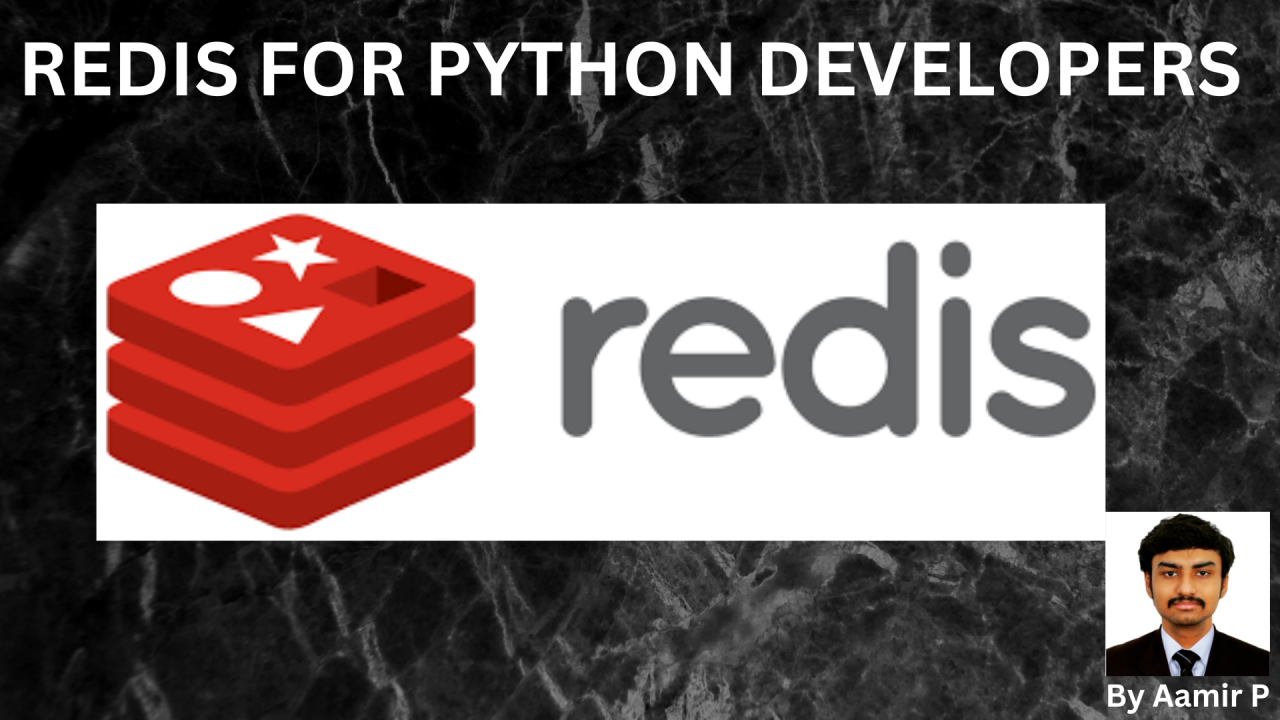On clearing the Redis for Python Developers Certification exam offered by Redis University, I have planned to tell some of the key concepts I have grasped from
Redis
.
It is an open-source, in-memory data store known for its versatility and speed. It stores various types of data structures let it be strings, sets, lists, etc. It became a primary reason to get the name “data structure server”. Mostly, Redis is used for caching, real-time analytics, message and task queue management. The design is known for its high-performance read and write operations.
Redis store key-value pair. You can also a unique key and then perform operations.
- Data is stored in memory which is why it is fast for storage and retrieval.
- It provides a rich data structure that can be manipulated atomically. This will make it vital for various applications.
- While Redis is primarily an in-memory store, it provides options for data persistence to disk, allowing data to survive server restarts.
- You can group multiple commands into a single transaction.
- It has publish/subscribe messaging options which are favourable between clients.
We will see some basic commands to work with Redis:-
- Installation pip install redis
- Import Library import redis
- Connect to Redis client = redis.Redis(host=’localhost’, port=6379, db=0) You can customize the connection parameters based on your Redis server’s configuration.
- Basic Operations Set and Get: With Set, we can set a key to a specific value. Get is used to retrieve the value of the specific key. client.set(‘my_key’, ‘my_value’) value = client.get(‘my_key’) Lists: client.lpush(‘my_list’, ‘item1’, ‘item2’) items = client.lrange(‘my_list’, 0, -1) Left Push (LPUSH): Adds one or more elements to the left end of a list. Range (LRANGE): Retrieves a range of elements from a list. Sets: client.sadd(‘my_set’, ‘member1’, ‘member2’) members = client.smembers(‘my_set’) Add (SADD): Adds one or more members to a set. Members (SMEMBERS): Retrieves all members of a set.Sorted Sets(Sorted Sets are ordered collections of unique elements with scores): client.zadd(‘my_sorted_set’, {‘member1’: 1, ‘member2’: 2}) members = client.zrange(‘my_sorted_set’, 0, -1) Add (ZADD): Adds one or more members with associated scores to a sorted set. Range (ZRANGE): Retrieves a range of members from a sorted set by score.Hashes: client.hset(‘my_hash’, ‘field1’, ‘value1’) value = client.hget(‘my_hash’, ‘field1’) Set (HSET): Sets the field in a hash to a value. Get (HGET): Retrieves the value of a field in a hash. Expiration: client.setex(‘my_key’, 3600, ‘my_value’) # Set with expiration (1 hour) You can set an expiration time when setting a key-value pair using the ‘Setex’ command. The key will automatically expire after the specified number of seconds. These are the basic keys which every beginner should know.
- Error Handling Be sure to handle exceptions that may occur during Redis operations, such as network issues or key not found errors.
- Closing the Connection client.close() Always close the connection when your work is done. It is good practice so that we can prevent resource leaks, graceful shutdown, and make it more consistent.
- Advanced features This includes features like Lua Scripting. With Lua scripting, we can execute directly in the Redis Server. The script performs various complex operations, manipulates data, etc. In short, developer-friendly.
- Rate Limiter Redis can be used to implement rate limiters, ensuring that certain actions (e.g., API requests) do not exceed predefined limits.
- Ecosystem You can work with multiple programming languages like Python, Node.js, Java, etc.
- Atomic operations This means that we need not type a lot of commands. A single command is enough to execute. This way, we ensure data consistency.
- Task Que Redis can serve as a backend for task queues, allowing you to distribute and process tasks in a scalable and efficient manner.
- Real-Time Analytics Redis is used to store and analyze real-time data, making it suitable for tracking user activity, metrics, counters, and logs.
So, that’s it for the day! Thanks for your time in reading my article. Tell me your feedback or views in the comments section.
Get my books, podcasts, placement preparation, etc.
Get my Podcasts on Spotify

Python Developer | Data Engineer Specialist @ LTIMimdtree| Ex- Mphasis,Infosys
6 个月Interested, please accept my connection so that I can share my resume